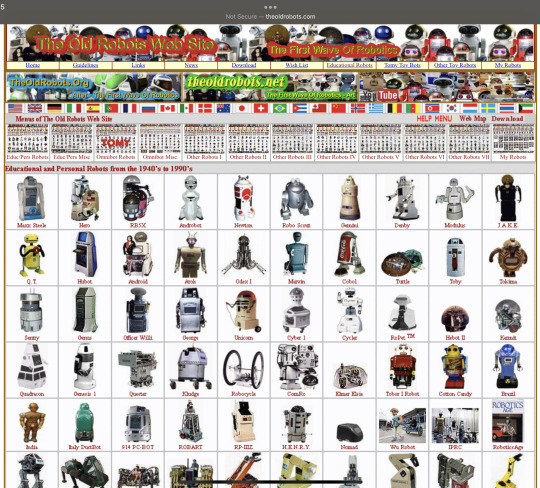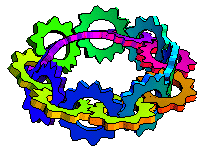Text
when the capitalists die out either thru global warming or revolution will we be able to start homegrown internet
116K notes
·
View notes
Text


Here's the trans pride USB power symbol tattoo I told @kernalphage and @pillsburysoyboy about! (Also tagging @solstakao bc you mentioned a USB trans symbol.) I'm probably going to tinker with the exact proportions and stuff before I put it on myself, but this is the general idea. DM me if you want the SVG!
9K notes
·
View notes
Text
The SECRET to Writing NEAT Chinese Characters
youtube
49 notes
·
View notes
Text
Okay some clarifications on Polyp (the project I'm discussing):
I have done a fair bit of research already and I have tempered my expectations appropriately, there are some ideas I'm not mentioning because i want to test them first but you are free to disagree with me i welcome feedback and when i have the prototype ready ill welcome your feedback on the codebase
While this would be inspired by tumblr (how could it not ive been on here for 13 years) im not going to rip them off or anything especially since this will be open source i want people to be able to develop their own interfaces and for people to be able to easily create their own themes and such
If you would like to suggest features you can use my inbox and if you want it to remain private just mention so
The client will be in react native and the hole punch will be in python/django
If this site shuts down/i get deleted i will have a blog at: https://rabbithutch.club/agies-posts/ and i will be adding rss functionality soon and i will also be at agie on cohost
17 notes
·
View notes
Text
For those who do not know i have 11 years of development experience along with one go at a similar project before (insert complicated backstory here) and i do think i could do this with my skillset and a little education
567 notes
·
View notes
Text
Gonna start telling everyone who thinks that language models are people that since the AIs are under 18 everyone who uses them for commercial purposes should be charged with child labour violations.
3K notes
·
View notes
Text
How to set up a research journal
This is just one way you can set up a research journal but it's helping me tremendously so maybe it also works for you. My set-up is partially inspired by this video by Answer in Progress and I suggest you check out their curiosity journal.
Preparation
First you need a notebook. The trick is to find a notebook that you're not afraid to "ruin". We all want a really neat, aesthetic research journal, but the reality looks more like hasty scribbles, but that's okay, that's where the research breakthroughs happen.
I personally bought a cheap lined notebook from Søstrene Grene that I thought looked cute and put a sticker on it. That way I feel good about using it but I also don't mind when my handwriting gets messy because it was only like 3€.
You should also stock up on pens you like writing with. Different colour highlighters and post-its are also a good idea but not a must. Keep it cheap but comfortable.
Title Page
Here you should put down all the really important information: year, title, deadlines, word count, supervisors. Maybe add an inspirational quote to spice it up but keep it simple and relevant.
Key
This should either be your next or your last page. I personally use the last pages of my journal so I can add thing and find it easier. Your key is there to list abbreviations and symbols.
For example, I have different symbols for statistics, dates, new terminology, questions, breakthroughs, important notes and abbreviations for the most important terms in my field. It's shorter to write T9N than Translation.
The trick here is to have enough abbreviations and symbols to save time and effort but not so many that you constantly have to look back and forth between your page and key. They should be memorable and not easy to confuse.
Topic Mind map
If you hate mind maps you can skip this of course or use a different method but what helped me is to visualise all the topics that connect to my research project in a mind map. I then colour-coded the main groups of topics with my highlighters. It helps me to keep an overview on how many topics I need to do research on.
Proposal
If you're writing a thesis/dissertation it can be helpful to have a page set aside for your proposal and take some bullet point notes on methodology, chapter structure, research context, aims and objectives and think of some titles. You can also do this for your lit review and a list of works to include.
Hypothesis and Question Pages
I set aside four pages for this but you can adjust this to your needs. The first page is my hypothesis. It doesn't have to be fully formed yet, it can just be bullet points with five question marks. You can always revise and update it but it is important to keep an eye on what you're actually trying to find out.
The next idea is basically just stolen from Answer in Progress: a section for big questions, medium questions and little questions. These aren't necessarily hypotheses you aim to answer but questions you have about your topic that might be good to look into (maybe they lead somewhere, maybe they don't).
Research Notes
Now comes the big, fun part. Research notes are allowed to be a little messy but you should have some sort of system so you can actually find what you're looking for afterwards. I'm currently just looking at books and articles so that's what my system is based on. You can totally adjust this to include other forms of research.
What I do is that I put down and underline the author and title of my source. Underneath that I use my highlighters and mark the topic of the paper based on how I colour-coded them in my mind map. You might have to do this after you've finished reading. For example, if a text talks about censorship and dubbing in Germany, three of my topics, I will draw three lines in light blue, dark blue and red, the colours I chose for those topics. This way you can easily browse your notes and see which pages are talking about which topics.
When it comes to the actual research notes, I include the page number on the left and then take bullet point notes on whatever is relevant. These are often abbreviated and paraphrased but if something is especially important I will write down a full quote.
As mentioned earlier, I have a key of symbols I use so I can simply put down a '!' in order to differentiate a research breakthrough from a normal note. You can insert your own thoughts much more easily when you know you'll be able to tell them apart later on. At the end of each article, book or even chapter I write down my main takeaway.
Other Notes
This is your research journal and you can do with it what you want. I also added lists of films that might be relevant for my research, a list of databases and publishers to check for papers and tips on research strategy.
If you're working with interviews or surveys you could write down your questions. If you're nervous about your research you could include a list of reasons why your research project is important or why you're doing it. You can include a to-do list or a calendar to track meetings with supervisors. Anything that helps you with your research.
1K notes
·
View notes
Text


I love the way my textbook describes python
[ID: Beginning programmers often take the fact that Python leaves no room for errors as evidence that Python is mean, hateful, and cruel. While Python seems to like everyone else, Python knows them personally and holds a grudge against them. Because of this grudge, Python takes our perfectly written programs and rejects them as "unfit" just to torment us. There is little to be gained by arguing with Python. It is just a tool. It has no emotions and it is happy and ready to serve you whenever you need it. Its error messages sound harsh, but they are just Python's call for help. It has looked at what you typed, and it simply cannot understand what you have entered. Python is much more like a dog, loving you unconditionally, having a few key words that it understands, looking you with a sweet look on its face (>>>), and waiting for you to say something it understands. When Python says "SyntaxError: invalid syntax", it is simply wagging its tail and saying, "You seemed to say something but I just don't understand what you meant, but please keep talking to me (>>>)."]
74 notes
·
View notes
Text
jaggedwolf said: can’t say this and not link/say which one it is
the original “turing test” paper is so beautiful. more beautiful, i imagine, than most expect going in—he’s got this underlying warm humanism and gentle humor throughout. (it’s present even in his more technical papers, but it shines here)
and the section that slays me each time is this:
“It will not be possible to apply exactly the same teaching process to the machine as to a normal child. It will not, for instance, be provided with legs, so that it could not be asked to go out and fill the coal scuttle. Possibly it might not have eyes. But however well these deficiencies might be overcome by clever engineering, one could not send the creature to school without the other children making excessive fun of it […]”
like. this is the original “turing test” paper. this is the first dude to formally conceptualize the whole “~*~what if computers learn to think, how could we tell~*~” thing. which, in subsequent SF invocations, is used mostly in spooky or paranoid contexts: the Voigt-Kampff test of Blade Runner, the preemptive rushes to constrain that budding will in I, Robot and others, and in modern worries over AGI. and i like those stories! they’re interesting and cool and eerie!
but
but
the original guy was not scared or unsettled or spooked by the prospect of new minds. this dude’s primary concern, when facing the dawn of artificial intelligence, was instead: “what if we teach computers to think and then the other kids on the playground bully the computer, that would be so mean :(((”
i love that, so much. i love people so much, sighs into hands
14K notes
·
View notes
Text
Im Very Pleased to share this website my partner directed me to. You’re interested in retro techand/or robotics, The Old Robots is a unique and surprisingly thorough archive of all sorts of real robots from as early as the 1940’s to as late as the 2000’s. I especially love the dated nature of its aesthetics. But, seriously- there’s pages and pages worth of these robots. Many robots also include videos embedded in the site to show them in action.


An excellent resource for those interested in robotics, the history of robots, robotic toys, or just goofs like me that love to see little funny hard metal and plastic fellas.
14K notes
·
View notes
Photo

http://mathworld.wolfram.com/MoebiusStrip.html
Two interlacing Moebius strips made of gears.
15K notes
·
View notes
Link
Worse still, even if we had the ability to take a snapshot of all of the brain’s 86 billion neurons and then to simulate the state of those neurons in a computer, that vast pattern would mean nothing outside the body of the brain that produced it. This is perhaps the most egregious way in which the IP metaphor has distorted our thinking about human functioning. Whereas computers do store exact copies of data – copies that can persist unchanged for long periods of time, even if the power has been turned off – the brain maintains our intellect only as long as it remains alive. There is no on-off switch. Either the brain keeps functioning, or we disappear. What’s more, as the neurobiologist Steven Rose pointed out in The Future of the Brain (2005), a snapshot of the brain’s current state might also be meaningless unless we knew the entire life history of that brain’s owner – perhaps even about the social context in which he or she was raised.
Think how difficult this problem is. To understand even the basics of how the brain maintains the human intellect, we might need to know not just the current state of all 86 billion neurons and their 100 trillion interconnections, not just the varying strengths with which they are connected, and not just the states of more than 1,000 proteins that exist at each connection point, but how the moment-to-moment activity of the brain contributes to the integrity of the system. Add to this the uniqueness of each brain, brought about in part because of the uniqueness of each person’s life history, and Kandel’s prediction starts to sound overly optimistic. (In a recent op-ed in The New York Times, the neuroscientist Kenneth Miller suggested it will take ‘centuries’ just to figure out basic neuronal connectivity.)
Meanwhile, vast sums of money are being raised for brain research, based in some cases on faulty ideas and promises that cannot be kept. The most blatant instance of neuroscience gone awry, documented recently in a report in Scientific American, concerns the $1.3 billion Human Brain Project launched by the European Union in 2013. Convinced by the charismatic Henry Markram that he could create a simulation of the entire human brain on a supercomputer by the year 2023, and that such a model would revolutionise the treatment of Alzheimer’s disease and other disorders, EU officials funded his project with virtually no restrictions. Less than two years into it, the project turned into a ‘brain wreck’, and Markram was asked to step down.
5K notes
·
View notes
Text
15 notes
·
View notes
Text
jaggedwolf said: can’t say this and not link/say which one it is
the original “turing test” paper is so beautiful. more beautiful, i imagine, than most expect going in—he’s got this underlying warm humanism and gentle humor throughout. (it’s present even in his more technical papers, but it shines here)
and the section that slays me each time is this:
“It will not be possible to apply exactly the same teaching process to the machine as to a normal child. It will not, for instance, be provided with legs, so that it could not be asked to go out and fill the coal scuttle. Possibly it might not have eyes. But however well these deficiencies might be overcome by clever engineering, one could not send the creature to school without the other children making excessive fun of it […]”
like. this is the original “turing test” paper. this is the first dude to formally conceptualize the whole “~*~what if computers learn to think, how could we tell~*~” thing. which, in subsequent SF invocations, is used mostly in spooky or paranoid contexts: the Voigt-Kampff test of Blade Runner, the preemptive rushes to constrain that budding will in I, Robot and others, and in modern worries over AGI. and i like those stories! they’re interesting and cool and eerie!
but
but
the original guy was not scared or unsettled or spooked by the prospect of new minds. this dude’s primary concern, when facing the dawn of artificial intelligence, was instead: “what if we teach computers to think and then the other kids on the playground bully the computer, that would be so mean :(((”
i love that, so much. i love people so much, sighs into hands
14K notes
·
View notes




